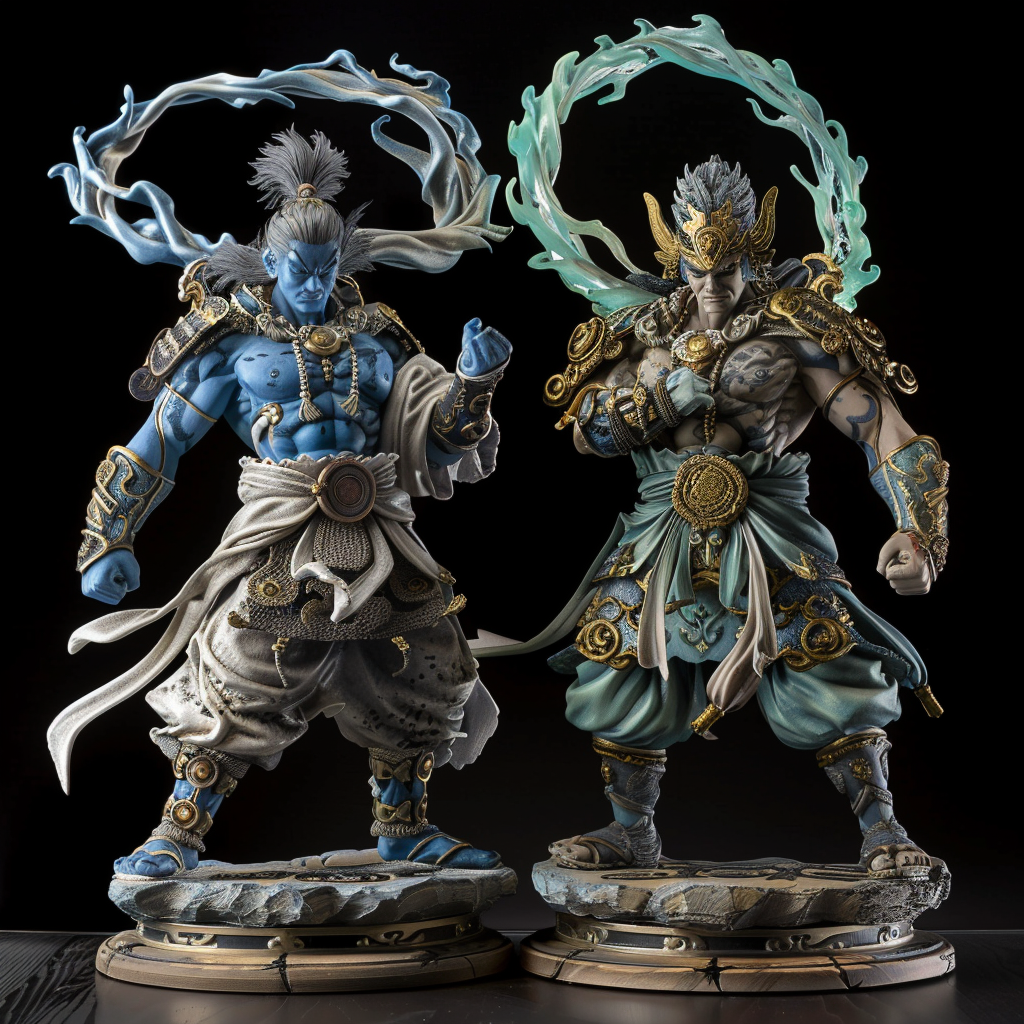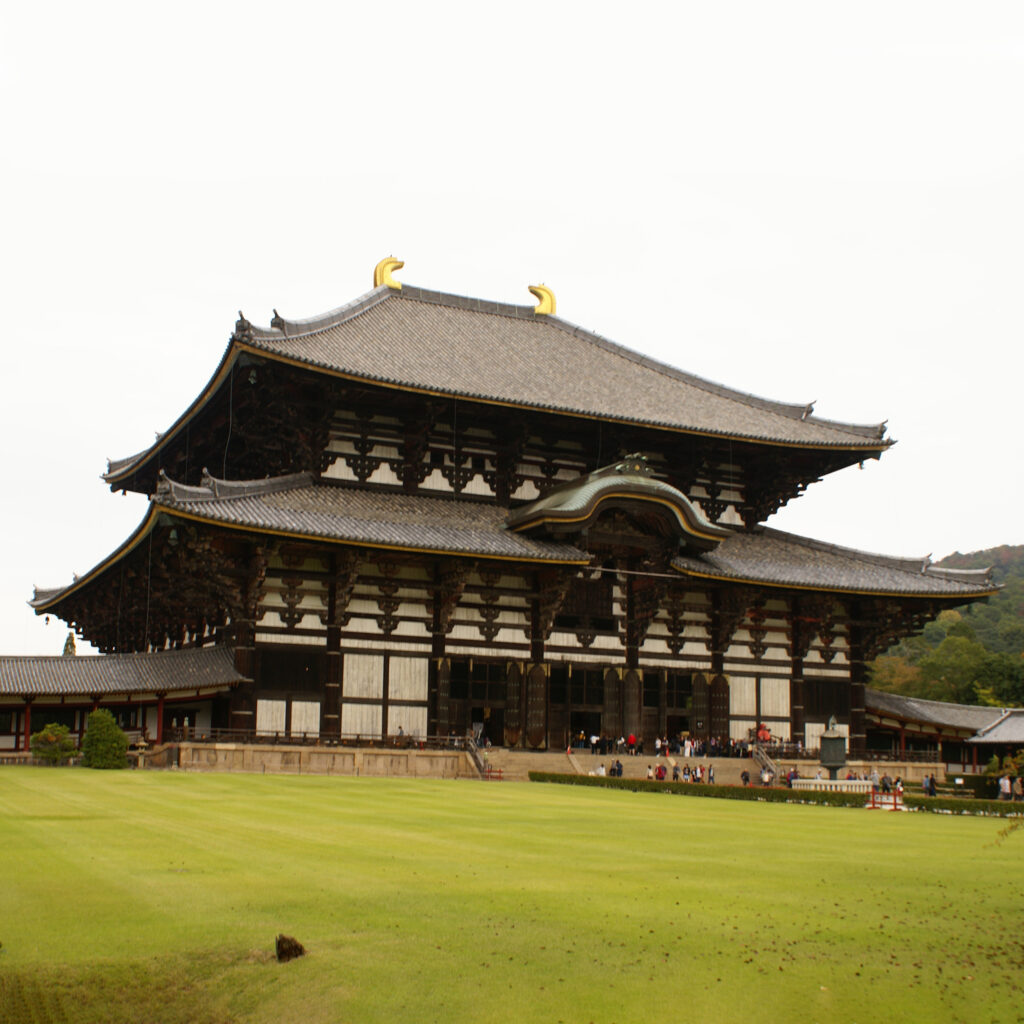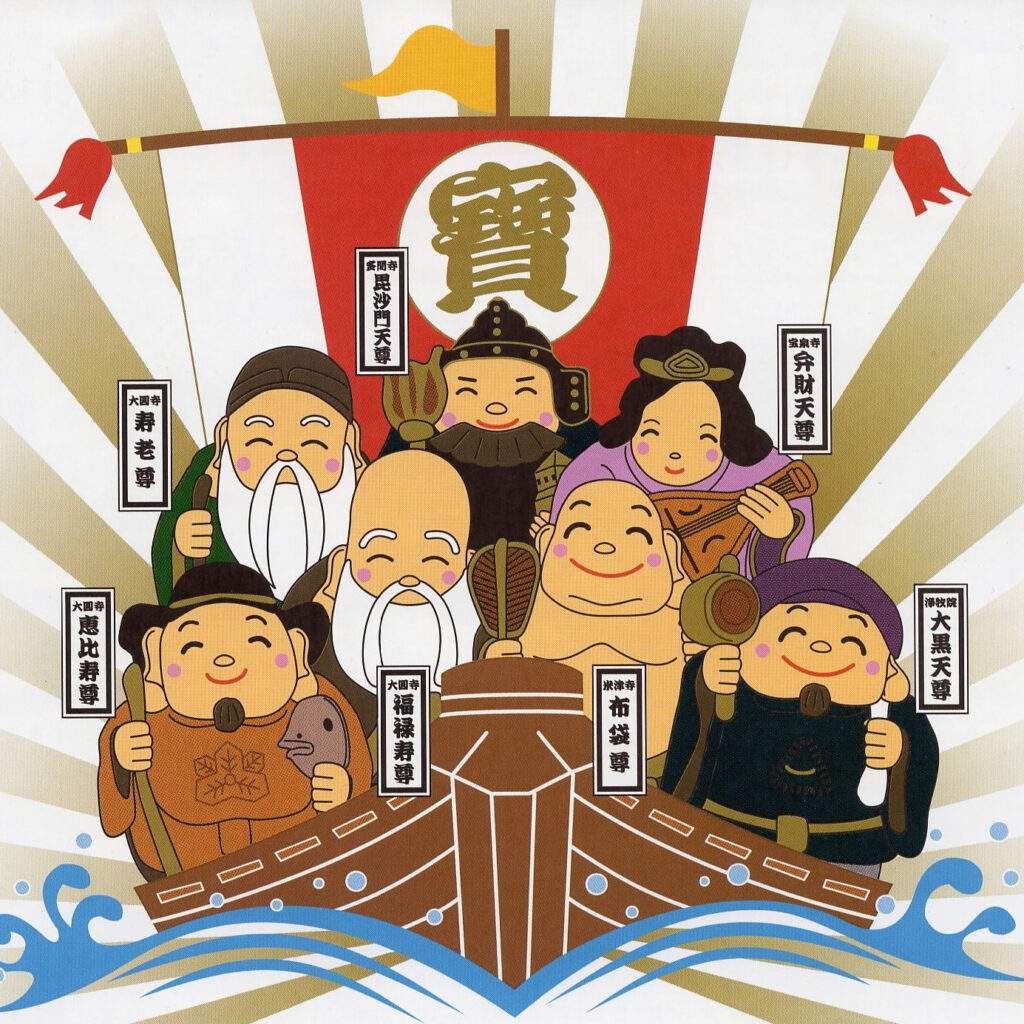Japanese mythology is a fascinating kaleidoscope of deities and entities representing the natural forces that shape the world. Among these divine figures, Fujin and Raijin occupy pride of place as guardians and respective personifications of wind and thunder. Their rich stories and varied depictions offer a captivating insight into the relationship between ancient Japanese and the elements around them.
Fujin: Guardian of the Winds
Fujin, also known as Fūjin, embodies the power and vitality of wind. In traditional iconography, he is often represented as a robust man. Sometimes with a monstrous appearance, firmly holding bags or panniers from which gusts of wind emanate. Its presence is a constant reminder of the ever-changing force of wind and its ability to shape the landscape.
According to Japanese legends, Fujin is a benevolent guardian of the lands and seas. It protects regions from natural disasters while promoting soil fertility thanks to the benevolent winds it brings. However, it is also feared for its ability to cause devastating storms. This reminds us of the capricious and powerful nature of nature.
Raijin: The Master of Thunder
Raijin, or Raiden in some interpretations, embodies the anger and raw force of thunder and lightning. Its appearance is often that of a fierce demon, with red skin, bulging muscles, and savage facial features. He is generally depicted holding taiko drums or mallets in his hands. Their percussion resonates in the skies during storms.
Japanese mythology attributes to Raijin the power to cause storms and lightning by beating his drums. This creates the tumult and terror of storms. Yet, despite its fearsome nature, Raijin is also considered an essential part of the cycle of life. Indeed, the rains and storms it brings are necessary to fertilize the land. They encourage the growth of crops.
The Meaning and Iconography of Fujin and Raijin
Together, Fujin and Raijin symbolize the harmonious union of opposing natural forces. Their joint presence in traditional Japanese art, whether paintings, sculptures or prints, is a powerful reminder of the interconnectedness of the elements and the need to respect nature.
In modern Japanese culture, Fujin and Raijin continue to inspire artists, writers, and creators of all kinds. Their imagery is often used to represent themes of strength, resilience and respect for nature. A dose of reminder to the Japanese, reminding them of the importance of living in harmony with the natural forces around them.
Fujin and Raijin, essential deities
Fujin and Raijin, the deities of wind and thunder, hold a special place in Japanese mythology as guardians and personifications of the forces of nature. Their varied stories and visual representations speak to the deep connection between the Japanese and the natural world. Whether as benevolent protectors or fearsome forces, Fujin and Raijin continue to capture the imagination. They remind us of the importance of respecting and honoring the power and beauty of nature. Many derivative products representing them exist such as our set of 2 glasses with the image of these deities.



